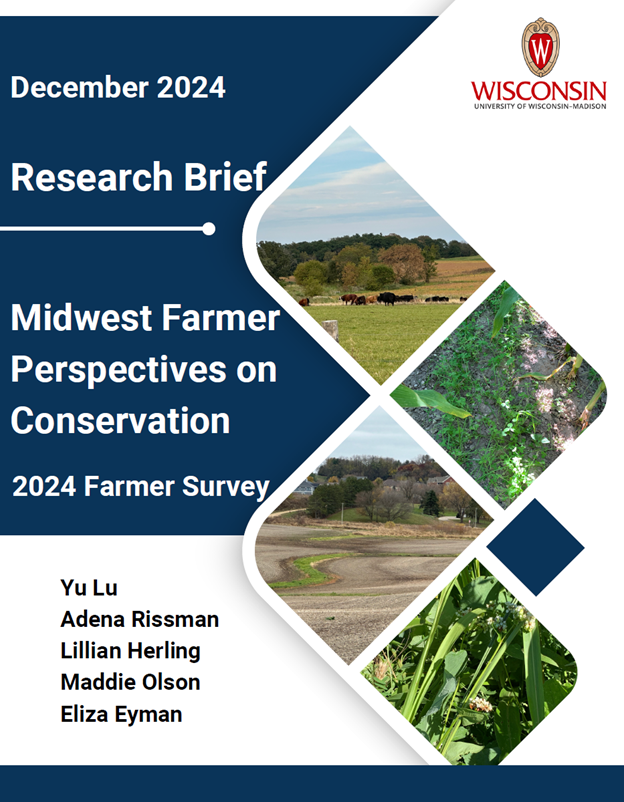Policy Analysis
Our research group works to understand natural resource and agricultural policy perspectives, options, and implications. Here are our research briefs and reports on
Water quality policy
 Bridging a Major Disconnect: ideas for farm standards and systems to achieve phosphorus goals in Wisconsin lakes and streams
Bridging a Major Disconnect: ideas for farm standards and systems to achieve phosphorus goals in Wisconsin lakes and streams
Despite decades of effort to reduce agricultural nonpoint source pollution, a gap remains between current on-farm practices and what would be needed to achieve water quality goals in lakes and streams. This report summarizes perspectives on options for reducing phosphorus loss from agriculture to help achieve water quality goals in lakes and streams.
By Adena Rissman, Eric Booth, Madelyn Olson, and Surya Vir
Survey results show Midwest farmers’ views on farm financial programs and conservation
Survey results overview on conservation and farm financial programs based on a 2024 survey taken by 527 farmers across eight Midwest states in the USA, covering row crop, forage, grass-based livestock, and confinement livestock production.
Farmer survey results research brief on conservation practices, identity, and concerns
Farm conservation practices impact soil health, water quality, wildlife habitat, carbon sequestration, and biodiversity. Conservation efforts, such as cover cropping, no-till planting, and buffer strips, provide farmers with tools to mitigate soil erosion, manage water runoff, and enhance biodiversity. As agriculture faces growing environmental and weather pressures, these practices can help foster resilient farming systems and long-term ecological and economic stability. This policy brief offers insights into farmers’ conservation practices, based on surveys conducted with farmers across eight Midwest states.
Farmer survey results research brief on farm financial programs
Farm financial programs such as crop and livestock insurance, agricultural operating loans, and conservation cost-share help farmers manage financial, weather, environmental, and operational risks. In recent years, these three farm financial programs were allocated a large portion of subsidies from the U.S. Farm Bill. In 2022, crop insurance premium subsidies totaled $11.98 billion, along with $5.8 billion for FSA farm loan programs, and $5.4 billion for major USDA conservation programs. We compared farmers’ responses about the helpfulness, satisfaction, and support for potential changes to financial programs for farmers with different production systems, including row crops, forage, grass-based livestock, and confinement livestock.
Dairy Farmer Survey
In collaboration with researchers at the University of Wisconsin-River Falls, and with involvement of farmers and advisors on the Grassland 2.0 project, Adena Rissman, Ana Fochesatto, and Yu Lu led a survey of dairy farmers to learn about their policy preferences. Understanding farmer perspectives is critical for well-designed policy.
Here we share results about:
1) Wisconsin dairy farmer perspectives on water quality
2) Wisconsin dairy farmer perspectives on labor and social policy



